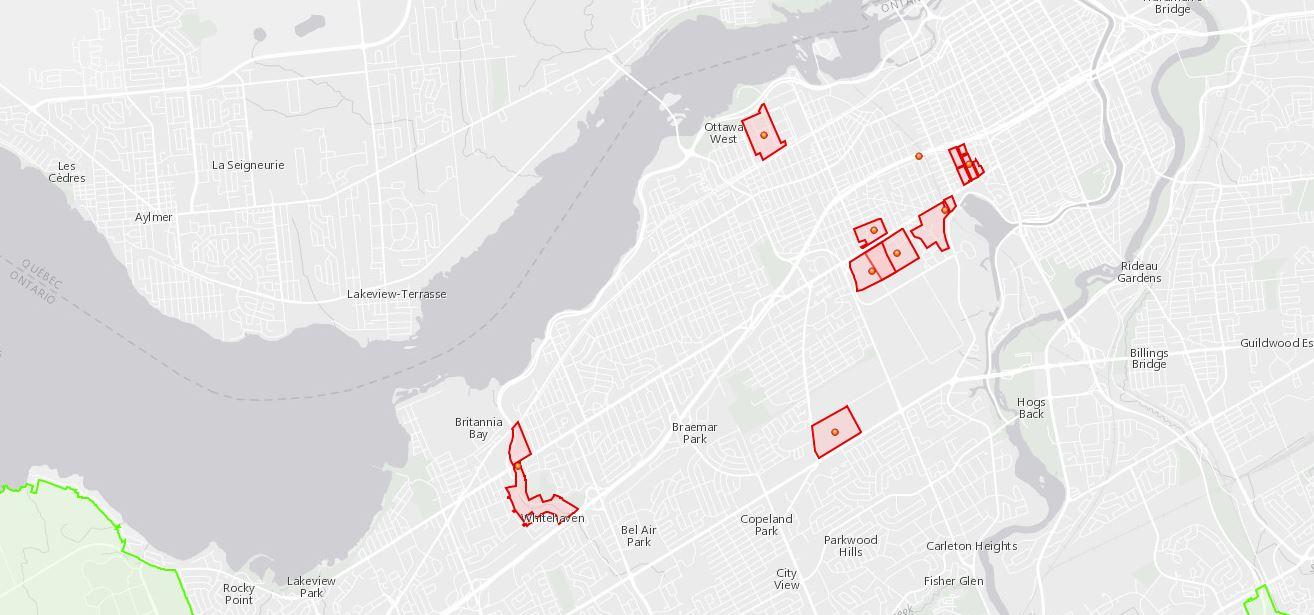At the request of the Minister of Canadian Heritage, the NCC reviewed potential federal sites for the new Civic Campus of The Ottawa Hospital. The review, conducted from June to November 2016, aimed to ensure that this important health-care facility benefited from a strong planning foundation, and met the needs of patients who will depend on The Ottawa Hospital in the coming decades.
Government of Canada decision
On December 2, the Minister of Canadian Heritage requested that federal officials undertake the necessary preparations to make the Sir John Carling site available as the future location of The Ottawa Hospital’s Civic Campus. NCC Board of Directors recommendation.
On November 24, the NCC Board recommended the Tunney’s Pasture site to the Minister of Canadian Heritage for the government’s decision. This site achieved a high rating, based on a set of 21 selection criteria, in comparison with the other potential sites.
Public consultation
The NCC’s site review for the new Civic Campus of The Ottawa Hospital benefited from extensive public consultations.
More than 8,000 people provided their input on the draft selection criteria and the potential federal sites for the new Civic Campus.

Selection criteria
Feedback received from the public and stakeholder consultations led to the refinement of the selection criteria as follows.
- Functional and operational: The criterion related proximity to rapid transit was revised.
- Regional and local interest: City building was refined to include integration with existing urban fabric and proximity to commercial amenities.
- Regional and local interest: The agricultural criterion was re-categorized under “capital interest.”
- Capital interest: Assessment of the impact that displacing public science/research would have on existing federal government facilities and functions was added to the evaluation.
Assessment of the 12 sites was based on the following 21 selection criteria, categorized under three themes.
Functional and Operational
- Size of site supports hospital’s functional needs
- Site is within the urban area and close to amenities
- Site is configured to permit flexibility for location of facilities
- Optimal distance from other hospitals
- Emergency access to arterial roads, major highways and air ambulance
- Scope of constructability issues, such as soil conditions and potential demolitions
- Proximity and synergies with complementary functions, health services and academic institutions
Capital Interests
- Compatibility with existing federal plans, including the Plan for Canada's Capital and related land use plans
- Impact on cultural resources, such as UNESCO World Heritage sites, national historic sites, designated buildings and archaeological sites
- Impact on existing federal government facilities and functions, including displacement and fragmentation of office or research functions
- Cost implications for the federal government related to land value, demolition and relocation of facilities
- Impact on protected and important views in the Capital
- Impact on the natural environment, including valued ecosystems, species at risk and ecological corridors
- Impact on publicly used Capital green spaces and recreational pathways
Regional and Local Interests
- Compatibility with the municipal plans of the City of Ottawa
- City building: Integration with the character of existing communities
- Integration with the transportation network, including access for vehicles, pedestrians and cyclists
- Integration with the public transit network
- Availability of municipal infrastructure and utilities
- Impact on agricultural lands
- Preparedness and responsiveness to major emergencies, including a number of access points